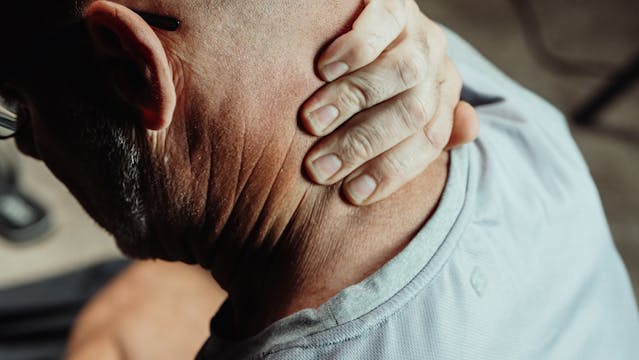
Photo from Pexels
After a major injury, your life may change in ways you would have never expected. The road toward healing can cause emotional upheaval and unanticipated challenges. As a new chapter opens, a vibrant sense of determination develops, entwining optimism, tenacity, and progress in the face of difficulty. If you’re working your way through a severe injury, don’t worry– strength, knowledge, and compassion will prevail.
Navigating Complex Medical Treatments and Rehabilitation Plans
It’s best to opt for structured treatment plans that change as experts work together using modern techniques to heal ailments. Customized treatments and diagnostic assessments provide a path specifically for healing. Comprehensive healing is made possible by intensive care and specific therapies, which also help to address neurological and physical problems. Specific therapy strategies reduce problems and improve healing.
Coordinated rehabilitation programs combine creative ideas with physical treatment to hasten mobility recovery. Supportive monitoring and adaptive tools help one to progress gradually. Skilled practitioners combine pain management techniques with exercise programs to encourage advancement and minimize setbacks. Consistent follow-ups and organized advice help to build recovery momentum and guarantee that developments stay sustainable over time. Steady development results from coordinated treatment, guiding every stage of recovery with relentless dedication.
Cultivating Emotional Resilience and Psychological Wellbeing
After major injuries, emotional rehabilitation is very important and combines psychological mending with physical advancement. Counseling and therapy assistance are part of comprehensive treatment, thereby developing mental strength. Effective coping strategies help to reduce anxiety and provide equilibrium throughout challenging times of recovery. Mindsets change, and creative ideas inspire a fresh inner vigor.
Professional direction and support mechanisms help to build resilience and confidence. Therapeutic sessions help to develop calm determination by offering the necessary means for emotional expression and stress release. Psychological treatment combines cognitive techniques and mindfulness exercises to foster stability throughout healing. Good community involvement and sympathetic surroundings enhance healing processes and motivate long-lasting inner development. Persistent, sustained healing, improved support, and creative therapy release deeper emotional stability.
Coordinating Legal and Financial Recovery Strategies
Complex legal systems and financial obligations following an injury need for educated direction. Financial consultants and specialized legal counsel help to negotiate claims and guarantee appropriate pay. While organized documentation helps to ensure accurate reporting, thorough appraisals of incident events promote the search for justice. Methodical discussions help to create the road for wise decisions in demanding rehabilitation settings.
Including both short-term and long-term plans, financial planning addresses unanticipated costs and recovery charges. Legal methods provide protective actions and responsibility as a top priority, so assuring that accountable entities cover obtained losses. While professional assessments improve knowledge of rights and alternatives, coordinated guidance simplifies difficult procedures. Cooperation in legal and financial matters lays a strong basis for reconstructing life following an injury. Make sure that you have trustworthy local legal counsel—for example, if you live in California, you might seek an accident lawyer in San Luis Obispo or related area.
Strengthening Support Systems and Community Networks
The foundation of healing following major injuries is resilient communities. Professional care blends with social networks—including family and peer groups—to offer complete assistance. Group projects and organized forums help to create shared encouragement and a common understanding. Consistent help from established relationships helps one to feel like they belong in trying circumstances.
Through common experiences and sympathetic communication, community centers and support groups propel healing. Coordinated volunteer programs and communication campaigns to improve access to important resources. Working together, professional direction combines with grassroots involvement to build resilience and unity. An active network supports healing, therefore stimulating positive ideas and confirming group strength. Strong, inclusive support helps people to heal permanently and to live with relentless devotion.
Embracing Holistic Wellbeing and Preventative Health Practices
A complete view combines environmental, emotional, and physical care. The focus is on restful sleep, a healthy diet, and conscious activities bolstering general energy. Regular examinations and preventative actions help to complement thorough rehabilitation by guaranteeing early identification of developing health problems. Strategies for ongoing well-being encourage a proactive attitude toward healing.
Therapeutic activities, meditation, and alternative therapies that complement everyday vitality and healing are among integrated practices. Constant self-care and expert supervision guarantee an adapted way of living based on strong health. Adopting such behaviors reduces future injury risks and promotes continuous enhancement of quality of life and welfare in all spheres. Proactive schedules and balanced, holistic treatment greatly improve general health and guarantee future vitality.
Conclusion
Recovering from a major injury is a complex path of perseverance, wise choices, and flexible plans. Urgent care, creative invention, emotional strength, and strong support networks taken together create a transforming process. Sound legal advice and preventative policies help to confirm progress and make sure that rehabilitation serves as a spark for fresh life energy and ongoing personal strength. Progress and resilience illuminate the different paths your life may take, even after such a serious event—and, although many aspects of your lifestyle may change, know that this hardship will not define you.


